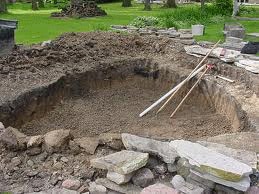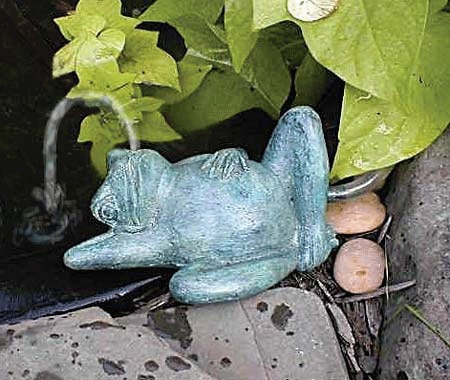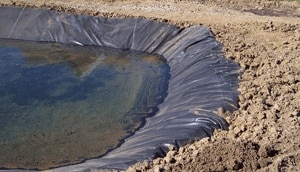
Pond Building Basics
How To Build A Pond Or A Water Garden
Ponds and water gardens come in all shapes and sizes and range from simple to as complex as you can imagine and when it comes to building them, they all started the same way, with an overall vision and some careful planning. The pond building goal, of course, is to create an aquatic environment that satisfies your own aesthetic vision within the limitations of your space and your budget. This guide will provide you with some basic considerations to get you started.
Sizing Your Pond
How big do I want this to be? Determining your ponds size is simply a matter of outlining the shape using a garden hose or rope. You are only limited by the space you have available.
Determining the depth of your pond is a much more important consideration. If you want to have goldfish or koi then a minimum depth of 2' is preferred, a non-fish pond should have a depth of no less than 1'. In either case you should understand that the deeper your pond the better it is for controlling water quality. Shallow ponds tend to warm up during the summer and this can be a contributing factor to algae growth (green water). In addition a deeper pond will allow one to stock a more diverse array of plant life.

Where Should I Place My Pond?
When choosing the location of your pond or water garden you should be aware of the differences between a sunny or shady spot.
Shade will reduce the amount of sunlight entering the pond and help reduce algae blooms, however, the trees that may be providing your shade will drop leaves into your pond which can be problematic.
A sunny location will allow you to stock a wider variety of aquatic plant life (the majority of lilies, hyacinths, irises etc prefer a sunny location although shade tolerant plants do exist), but the sunshine can make algae problematic.
In either case there are filters, skimmers and pond additives, that will help you address pond water-quality issues that arise no matter where you choose to place your pond.

Water Circulation
Since very few people want to have a stagnant body of water in their yard the next consideration is how one is going to circulate the water in your pond. How you achieve this depends on the visual or aesthetic effect you prefer and this is where you get to be creative. The most common methods involve either a spitter, a fountain, a stream or a waterfall. All of these methods involve a mechanical pump for the actual movement of the water.
A spitter refers to a concrete, resin or bronze figure (frogs, gnomes, fish etc.) that is plumbed to spit water back into the pond. These can be found at any nursery, gift store or landscape supply store and come in a variety of sizes, styles and prices. Spitters are easy to install and suit a smaller pond.
Fountains also come in a variety of styles from bells, frothy jets or more classic blossom designs. Sizing here depends on the pump and on the look one is trying to achieve. In a large pond a small little fountain can look a bit silly and the opposite is true as a huge fountain in a small pond can be a bit much.
Streams or waterfalls are also quite popular and these vary in height and width and are more challenging. The construction of these features involves some careful pre-planning, make sure you research carefully or hire a qualified contractor before installing on of these.
Choosing Your Pond Liner
Before you break ground you will need to decide what type of pond liner will be best for your situation.
Pre-formed UV resistant liner or rigid liner is the easiest. You simply purchase the mold and dig the corresponding hole. The only downfall to this is that they are expensive and one is limited to the sizes and shapes available.

Rubber EPDM liner is a method that allows for greater flexibility in terms of pond size and shape. It is essentially a rubber sheet that lays into your pond excavation. This approach is relatively inexpensive, long lasting and can be formed into any shape desired.
Cement can be used as well, however it can be costly and problematic in some cases. Unless one feels confident with cement or hires a contractor this method is the most demanding. Furthermore cracking and shifting can present problems.
All three of these installations have their place but one should think ahead as to what is right for them.
The goal of pond building is to add beauty and create your own backyard paradise. Every water feature is distinct and this allows you to create something personal and distinct. With proper planning and knowledge, all things are possible, and all problems are solvable. Have fun, be creative and make it your own.
Leave a comment